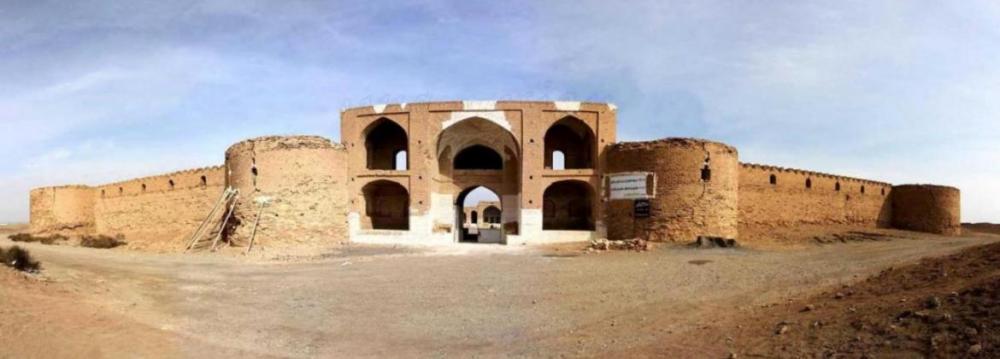Iran is home to scores of caravansaries, owing to its key location on the Silk Road which saw countless traders and travelers make the long journey from the Orient to Europe and back between 114 BC and c. 1450 AD.
Today, most of those caravansaries are in bad shape. While a handful have been renovated and are used as lodging facilities, the majority have fallen into disrepair, most prominent of which is Dir Gachin Caravansary in Qom Province.
Located on the Isfahan-Rey trade route, Dir Gachin was built during the reign of Ardeshir I (224-242 AD), the founder of the Sassanid Empire, to serve as a fort. Decades later, the fort was repurposed to be used as a caravansary, and it was modified and expanded during the Seljuk (1037-1194), Safavid (1501-1736) and Qajar (1789-1925) eras. As such, Dir Gachin displays different architectural styles from vastly different eras, garnering it the nickname “the mother of all caravansaries”.
A structure such as Dir Gachin would normally be a top attraction in any other country, but Iran is not just any country.
Maybe the nation’s rich history and the existence of tens of thousands of historical structures across Iran have desensitized cultural heritage officials and the general public to the value and worth of these sites. There is no logical reason why a structure as grand as Dir Gachin should be so grossly deserted as to be used by nomadic tribes to shelter their camels, which caused significant damage to the site, according to a report by ILNA.
“When the ICHHTO was put in charge of the site (in early 2000), there were piles of camel droppings all over the place — some as high as a meter,” said Amar Kavousi, director of the provincial office of the Iran Cultural Heritage, Handicrafts and Tourism Organization.
Slow Progress
Restoration work on the site began ten years ago but progress has been excruciatingly slow.
“The entire project needs about $1.11 million, but we’re barely given $16,000 a year,” he said.
Although a million dollars to fix up a historically significant site with the potential to generate substantial revenue is no big deal, the ICHHTO is either unwilling or, as officials claim, unable to provide the funds. This has prompted Kavousi to consider transferring the site’s ownership to a private owner, but because Dir Gachin is a registered national heritage, the authorities oppose the idea.
Nevertheless, Kavousi says the ICHHTO may be rethinking its stance on the matter and could soon go ahead with the sale.
Sites inscribed on the National Heritage List are obviously meant to enjoy a certain degree of protection and priority when it comes to funding; yet, Dir Gachin has neither been protected nor restored as quickly as would have been expected.
Recent reports say funding for the ICHHTO will increase by 44% in the next fiscal year (starts March 20), raising its annual budget to $194 million. Maybe Dir Gachin will finally receive the attention it desperately needs to be restored to its former glory. Then again, maybe not.


